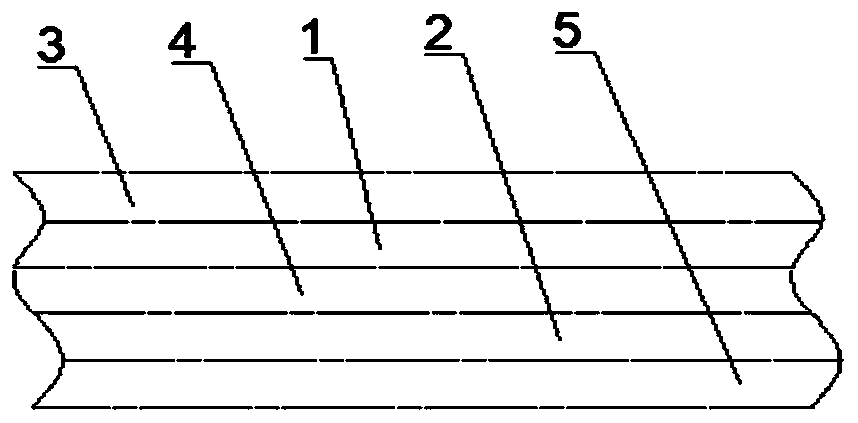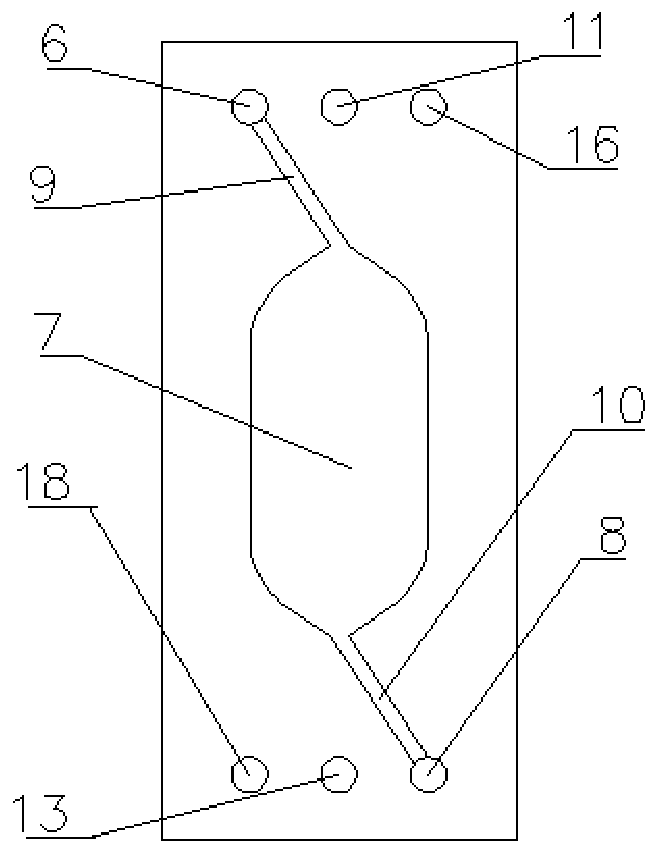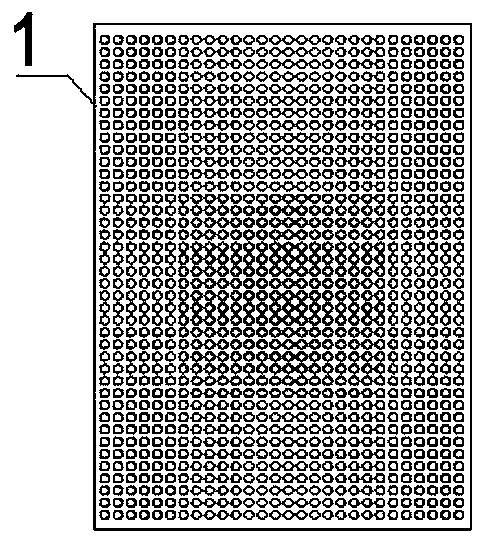Kidney organ chip and kidney organ medicine detection model
An organ chip and chip technology, applied in the field of microfluidics, can solve the problems of large consumption of reagents, inaccurate flow rate control, and influence on experimental results, etc., and achieve the effect of rapid sample consumption, simple operation, and high cell survival rate
- Summary
- Abstract
- Description
- Claims
- Application Information
AI Technical Summary
Problems solved by technology
Method used
Image
Examples
experiment example 1
[0137] Experimental example 1. Performance detection of the microfluidic chip of the present invention
[0138] The present invention has carried out a research experiment on the performance of the microfluidic chip of the present invention and the existing common chip (for example: the microfluidic chip recorded in the invention patent application 201410191283, 201510860959), except that the chip is different, other conditions are the same, including Using the same cells (specifically, human proximal tubular epithelial cells RPTECs), under the same culture conditions (the medium, methods and culture conditions used in the specific cell culture process are carried out with reference to the product instructions of commercially available RPTECs) Cell culture was carried out to obtain the following comparative data:
[0139] chip type
Initial amount of sample
Liquid change frequency
cell viability
Chip of the present invention
30ml
more than 7 ...
experiment example 2
[0142] Experimental example 2, kidney organ chip and drug detection model of the present invention
[0143] (1) Kidney organ chip
[0144] Such as Figure 1 to Figure 5 Shown: a microfluidic chip, which includes a porous polycarbonate membrane layer 1, the two sides of the porous polycarbonate membrane layer 1 are respectively provided with a chip upper layer 2 and a chip lower layer 3, that is, the porous polycarbonate membrane Layer 1 is sandwiched between the upper chip layer 2 and the lower chip layer 3, and the upper chip layer 2 and the lower chip layer 3 are both made of polydimethylsiloxane (or acrylic plate);
[0145] On the upper layer of the chip (3), there are an upper inlet pool (6), a diamond-shaped upper cell culture chamber (7), an upper outlet pool (8), and a middle inlet pool (11), a middle The outlet pond (13), the lower inlet pond (16) and the lower outlet pond (18), are communicated with the first passage (9) between the upper inlet pond (6) and the uppe...
experiment example 3
[0156] Experimental example 3. Detection of albumin metabolites in renal tubular RPTEC cells
[0157] The increasing prevalence of diabetes mellitus (DM) and secondary kidney injury leads to diabetic nephropathy (DN). Early renal disease is defined as microalbuminuria (30-300mg / day), so the detection of albumin in renal organ metabolites is particularly important.
[0158] The detection of renal cell metabolites is an effective indicator to prove that the cells are growing well. Albumin content in cell metabolites was determined using a microplate reader using an albumin detection kit (bromocresol green colorimetric method). Such as Figure 10 As shown, the original albumin content in the detection medium was 2.22mg / ml, after 3 days the albumin content was 2.353mg / ml, after 6 days the albumin content was 2.704mg / ml, after 9 days the albumin content was 2.745mg / ml . On the 3rd and 6th days, the albumin metabolism was the most, the cell growth was better, and the metabolism ...
PUM
| Property | Measurement | Unit |
|---|---|---|
| depth | aaaaa | aaaaa |
| depth | aaaaa | aaaaa |
| width | aaaaa | aaaaa |
Abstract
Description
Claims
Application Information
 Login to View More
Login to View More - R&D Engineer
- R&D Manager
- IP Professional
- Industry Leading Data Capabilities
- Powerful AI technology
- Patent DNA Extraction
Browse by: Latest US Patents, China's latest patents, Technical Efficacy Thesaurus, Application Domain, Technology Topic, Popular Technical Reports.
© 2024 PatSnap. All rights reserved.Legal|Privacy policy|Modern Slavery Act Transparency Statement|Sitemap|About US| Contact US: help@patsnap.com










